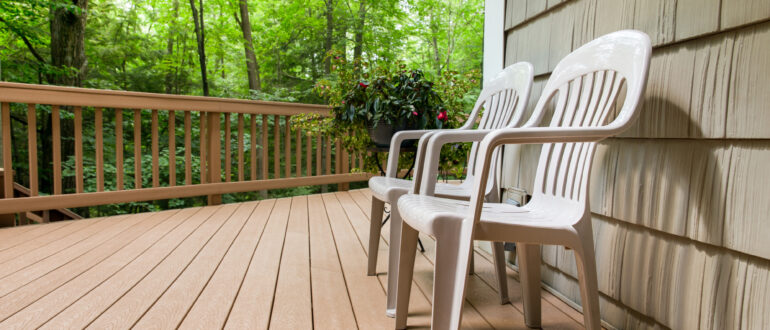Decks continue to be a popular feature for homes of all sizes. Domestic demand for decks is expected to grow by 1.3% annually. If you are looking to build this popular outdoor structure, you’ll need to know about composite decking.
Read on to learn the basics of wood decking and building a deck. We’ll explore the benefits of building both types of construction.
What Is a Wood Deck?
Wood decks use natural materials. There is a natural attraction to the look and feel of real wood. Wood captures carbon as it grows and adds beauty to our homes.
Cedar is a popular choice for deck construction. Cedar resists rot and insect infestation. It is more durable than other wood options.
Redwood is considered a premium wood deck choice. It is easy to cut and work with. It is naturally insect-resistant and very durable.
Douglas Fir is both strong and beautiful. Like the two options already listed, the wood is resistant to mold and decay when properly treated.
Southern yellow pine is environmentally friendly. The trees grow fast, meaning cut wood stocks are quickly replenished.
What Is Composite Decking?
When people think of synthetic decking, they usually think about plastics. Composite boards come in a surprisingly wide range of base materials.
Wood plastic composite uses fibers found in wood pulp, bamboo, or nut shells. Those natural fibers are then mixed with plastic powder. This could be polyethylene or polypropylene.
Lumber composite is considered environmentally friendly because the fibers usually come from waste. Wood plastic composite can be easily recycled as well.
This form of composite material is also easy to paint, saw, drill, nail, or screw. The fiber content means that it may not be as resistant to weather.
Cellular PVC is a popular form of fake wood. It is made into a dense honeycomb structure. Cellular PVC is resistant to rot and insects and can be painted.
To match the appearance of wood, cellular PVC can have a grain pattern added. PVC is more environmentally friendly than oil-based plastics. PVC also has similar qualities to wood.
Mineral-based composite decking is strong and stable. It does not warp or stretch. It is completely impervious to damage by insects. The material is made from a combination of minerals and plastics that are heated and molded.
Benefits of a Wood Deck
As you consider having someone build you a custom deck, consider the benefits of using wood. One of the best benefits of a wood deck is its natural appearance.
There is a reason composite materials try to mimic natural wood. But even the best composite materials cannot fully imitate the look and feel of wood.
Wood is also easy to cut. Most saws that you have will likely be up to the task of cutting wood.
If you live in a hot climate, wood decks are often a cooler choice. Composite materials tend to absorb and keep heat more than wood.
In general, wood also offers better traction. This can be important if you are worried about you or a visitor slipping on your deck when it is wet. Wood is great at absorbing water.
Although wood prices are on the rise, wood decking is still considered to be affordable. There are many wood options to choose from that vary in cost.
There is certainly a wood that can meet your budget goals. For homeowners on a budget, real wood may be the way to go.
Benefits of Composite Decking
Composite decking requires less care than wood in general. Wood decks require reapplications of deck sealers every two to three years.
Composite decking requires minimal maintenance, but you may need to undertake minor repairs for dents and scratches.
Fortunately, you won’t have to worry about repainting your deck, especially if your composite material is fabricated with your color choice.
If you consider using composite materials, you will need to decide whether you buy capped or uncapped boards. Capped boards have a plastic coating. Uncapped boards have more of a natural wood look and feel.
While a typical wooden deck lasts 10 to 20 years on average, a composite deck can last at least 30 years or longer. Even regular maintenance cannot keep a wood deck in shape as long as a composite deck.
Other headaches you won’t have to worry about include stripping and sanding a natural wood deck every few years. This step is important for protecting wood decks from moisture.
While many people point to affordability as a benefit of natural wood, wood prices are increasing. The price of a high-end wood deck is now comparable to composite materials.
Depending on the composite material you use, your synthetic deck could be more environmentally friendly. Over the course of decades, you may need to rebuild your deck two or three times, which uses a lot of wood.
A quality composite deck could be a one-time buy that prevents those trees from being cut down.
Learn More About Composite Decking
Are you ready to enjoy the benefits of composite decking? The synthetic material is highly durable and attractive. Any deck design that can be made from natural wood can be made using synthetic materials.
When you are ready to start your project, be sure to work with a reputable company. Diamond Decks is a highly trusted patio and deck company located in Texas.
We rely on our many years of experience to help liven your outdoor space. Contact us today for a free quote.














